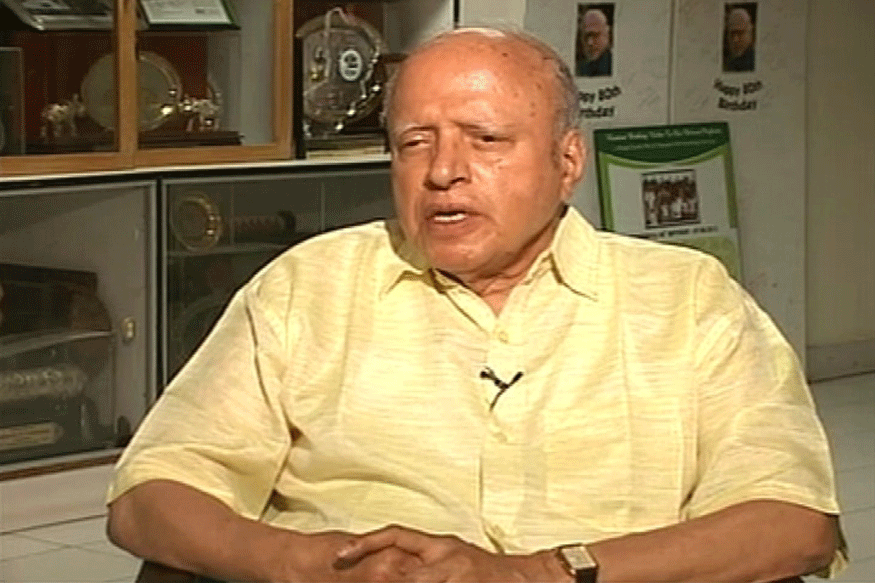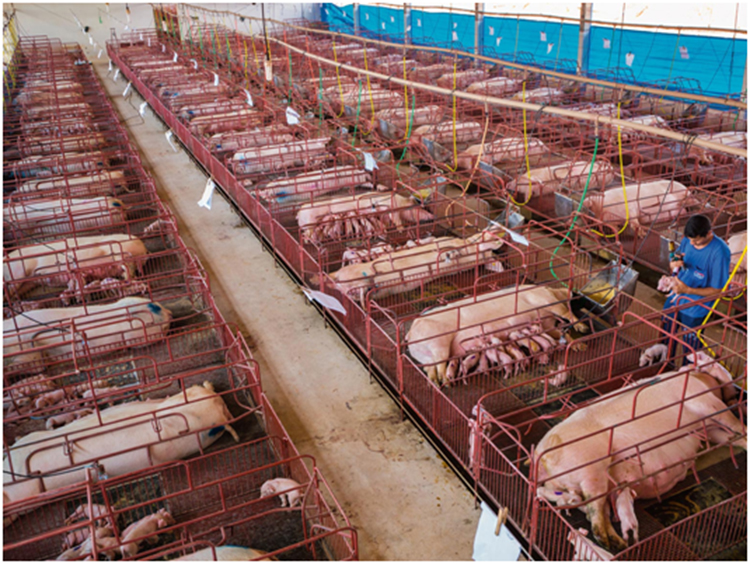
A lie repeated a hundred times will not turn a lie into a truth. The big media should realize this and stop perpetuating the lie of the green revolution saving India from hunger, long after the world has awakened to the reality of how harmful the green revolution has been from the point of nutrition, food safety, environment and climate change.
As recently many big newspapers have been full of how the green revolution saved India from hunger, it is important to re-emphasize that the green revolution was essentially the sudden and destructive removal of the rich traditional bio-diversity of our farms, the achievement of many generations of farmers going back to hundreds and in some cases thousands of years. This was done to serve the interests of rich countries and their agribusiness interests by dictating that only the crop varieties which respond well to high doses of chemical fertilizers and need chemical pesticides and weedicides are grown, while the diversity of traditional seeds well suited to the country’s conditions are phased out and discarded.
In agriculture the period after mid-sixties is generally regarded as the ‘green revolution’ phase of Indian agriculture. The most important feature of this is the introduction of green revolution seeds or GR seeds (mainly dwarf, non-lodging varieties which gave high yields when fed by high doses of chemical fertilizers). Along with the spread of G.R. seeds, as a part of the ‘package deal’, the use of chemical fertilizers, chemical pesticides and agriculture machinery increased greatly. To spread and strengthen the new technology, investment in farm research, education and extension tuned to the new technology also increased rapidly and new agricultural universities for this purpose were opened one after the other generally on the American model..
An overview of the situation of farm productivity before and after green revolution is provided in the 12th Plan document in an important table (See Table below). Here we can see clearly that despite the much higher use of chemical fertilizers, pesticides, weedicides etc. in the green revolution phase and the rise of other related expenditure as well, the growth of farm yield on the whole in the green revolution phase was in fact lower than in the previous phase, despite the fact that in the earlier phase India had faced several serious constraints and problems and had a much lower farm budget.
Table 1
Average Annual Growth Rates in Yields per Hectare
Crop Pre-Green Revolution Green Revolution
1951-52 to 1967-68 1968-69 to 1980-81
Wheat 3.7 3.3
Rice 3.2 2.7
Jowar 3.4 2.9
Bajra 2.6 6.3
Maize 4.8 1.7
Coarse Cereals 2.6 1.5
Pulses 2.3 -0.2
Oilseeds 1.3 0.8
Cotton 3.0 2.6
Sugarcane 1.6 3.1
While the poor performance of the green revolution is very evident from this table, on the other hand we also have several studies by eminent experts who studied India’s agriculture based on indigenous varieties and the accompanying technology and found that the farmers were making very good use of their resources and conditions, and that the technologies followed by them were very sound and suitable to their conditions.
We also have evidence that many indigenous varieties have yields higher than GR varieties without using the heavy doses of agro-chemicals needed by GR varieties.
What is more, it is known now that before G.R. seeds were introduced, far from facing emergency conditions, India’s scientists were on the verge of a major breakthrough for raising yields based on indigenous varieties, at least in the case of the most important food crop rice. These scientists also pointed out serious flaws of G.R. seeds and technology, including the fact that these were highly susceptible to pests and diseases.
However those scientists who tried to point out the flaws of G.R. technology were victimized badly. Those who promoted G.R. technology and welcomed the increasing pressures of rich countries for only a particular kind of farm growth were pushed to the top and given all the awards.
The green revolution technology phase has seen high rates of depletion of natural fertility of farmland, including alarming loss of several micro-nutrients, high fall in water table in vast areas, many cases of poisoning of people by pesticides and other agro-chemicals, as well as loss of other forms of life and spread of serious diseases, botanic holocaust in the form of loss of thousands of crop varieties and threats to others, loss of invaluable traditional wisdom relating to agriculture and seeds.
There have been several other adverse impacts including much diminished per capita availability of pulses and legumes, loss of taste and nutrition in food-crops, reduced availability of fodder, serious hazards and pollution in more intensive G.R. areas and high drain on foreign exchange from import of chemical fertilizers.
Clearly the GR approach to agricultural development should be given up. The following alternative approach should be emphasized.
>> Protecting vast diversity of indigenous seed varieties and organic, low-cost, ecologically protective, self-reliant, local resource based farming methods.
>> Using scientific knowledge including modern and traditional knowledge to promote the above approach and the ‘agro-ecology’ approach in better ways. Priorities of farm research and extension network to be entirely changed in this direction.
>> Land-reforms to be implemented effectively.
>> Much higher allocation for agriculture and allied activities with direct benefits to organic farmers and seed-savers, seed protectors.
It is very important to learn from past mistakes, particularly now that India’s farming system is on the verge of the second big threat, perhaps an even bigger disaster-in-the-making, in the form of GM crops
. In Africa billionaires of rich countries and their organizations are still busy promoting green revolution although all the evidence tells us that agro-ecology is needed here and many farmers’ organizations are also demanding this. Those who are spreading big lies about the achievements of India’s green revolution are also misguiding our African brothers and sisters by pushing them also towards ecologically destructive farming while their clear need is for agro-ecology
Bharat Dogra is Honorary Convener, Save the Earth Now. His recent books include India’s Quest for Sustainable Farming and Healthy Food, Man over Machine and Planet in Peril.













































